26/6/2015
Yesterday I went out into the parcel’s garden and noticed that both palm oil trees have nice clumps of palm oil kernels that are growing. They should be ready in a couple of weeks, when I’ll do another blog about their use here in central Africa.
The following blog details a very popular use of manioc leaves cooked in palm oil, and manner of extracting oil from the kernels that is still found in some areas of the county –
The following recipe – ‘Manioc leaves with crushed palm oil kernels‘ – is popular throughout central Africa and combines three of the most important local ingredients – manioc leaves, fresh oil from palm nuts, and ground nuts.
Here are the ingredients – quantities are pretty much up to you:
Fresh manioc leaves – Oil palm nuts – Fresh peanuts – Leeks – Garlic – Palm oil – Red pepper – Salt –Preparation requires a bit of work. First, you must collect a basket of tender manioc leaves:
Then, you need to pound the manioc leaves into a paste, like this:

Pounding the manioc leaves can take a couple of hours, and is a task often shared by several people. This is Eileen, daughter of one of the staff, pounding manioc leaves.
In the meantime, send your menfolk off to collect a bunch or two of fresh palm nuts:
You prepare the oil palm nuts by removing the flesh from the kernels and pounding it – then, you squeeze the crushed fibers between your hands, using the liquid, but throwing away the fibers.
Groundnuts you’ll probably have to buy fresh at the local market, unless you raise them yourself:
Shell the groundnuts and crush them into a powder.
The garlic and leeks are not indigenous to central Africa, but were introduced during the colonial period and now are featured in many local dishes.
They are pounded together with the cassava leaves, once the leaves have been fairly well mashed.
The oil palm liquid and groundnut powder is also added and pounded/mixed in.
Some people also add tomatoes and green peppers.
The final mixture looks something like this:
The best way to cook is in a clay pot, but increasingly folks cook in aluminum pots, like this:
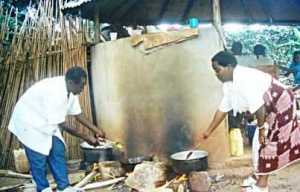
Isombe being cooked to the left, goat meat to the right, by project staff preparing for a wedding feast
You can add a little palm oil to the pot – but not too much, because you’ve already extracted some oil with the liquid of the fresh palm nuts.
Isombe y’umwamba (which means manioc leaves with oil palm) is always eaten with a pate – a thick porridge – and often in this manner:
Isombe is frequently served at the Hotel Lac Tanganyika, by way of presenting a much-loved traditional dish that is highly nutritious – and tasty!
Thanks to Yolanda, who asked me about this recipe here.



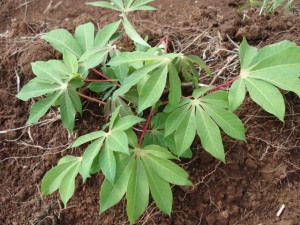

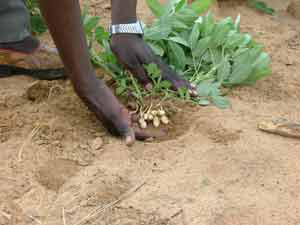
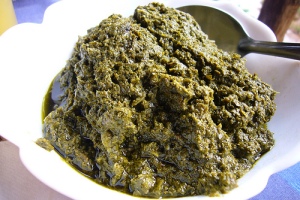
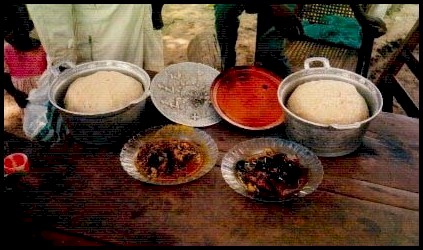









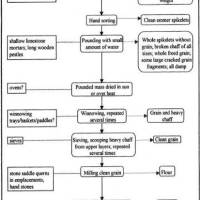















New posts via email. Thanks
LikeLike
Pingback: Batwa Pots in Burundi: Traditional Clay Pot Cuisine, Pt. 2 of 2 « Dianabuja's Blog
Lived there for four years. Delicious in various combinations and methods of preparation.
LikeLike
Agree – it is an almost daily dish here in Burundi, especially upcountry where folks harvest it right off of their own manioc plants.
Dianabuja.
LikeLike
Thanks Diana!!
LikeLike
Thanks! and Yum! …Though I’ve only ever had it from an aluminum pot, so maybe I am missing out.
I had another conversation about this recipe the other day and someone suggested that they enjoyed adding eggplant to the mixture as well.
Thanks again!
LikeLike
yes, like so many dishes, after you get past the base ingredients, different folks will add items to their taste – or, perhaps, just what is available in the garden or in the house. I imagine indigenous eggplants – garden eggs – would be best to use.
LikeLike
I wish I could try it! I can find all ingredients here, except manioc leaves. 😦
LikeLike
You could use collard greens – or any greens that are fairly coarse and somewhat piquant – or, have a ‘strong’ taste.
LikeLike